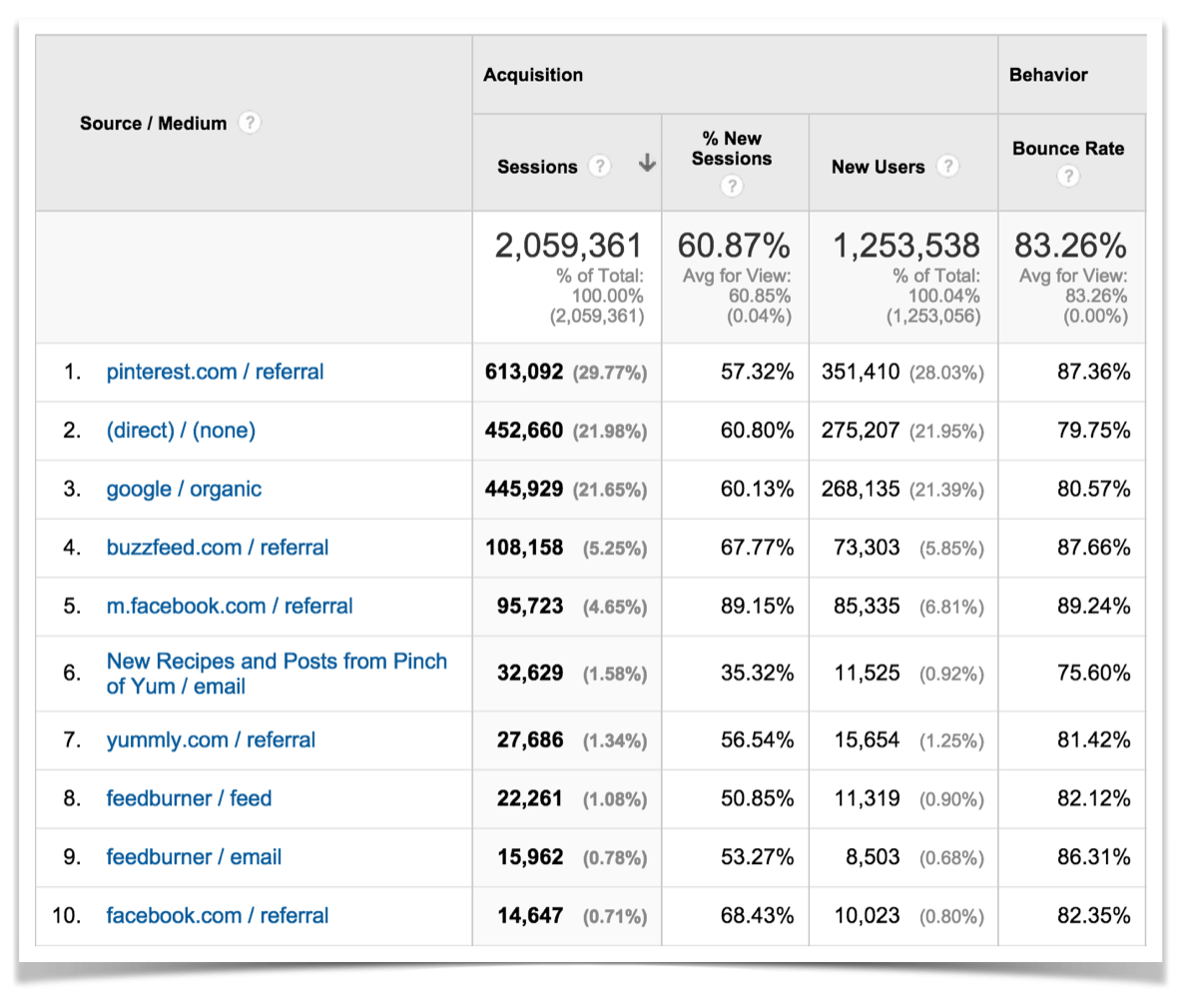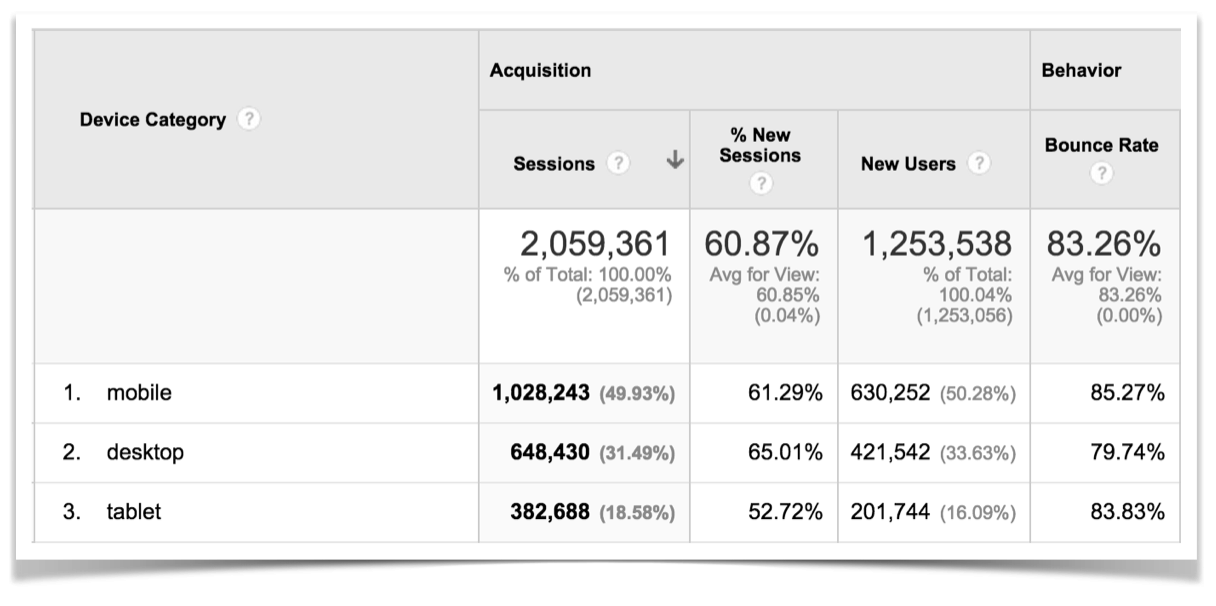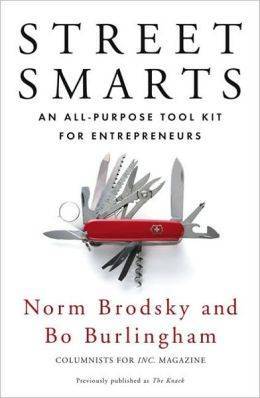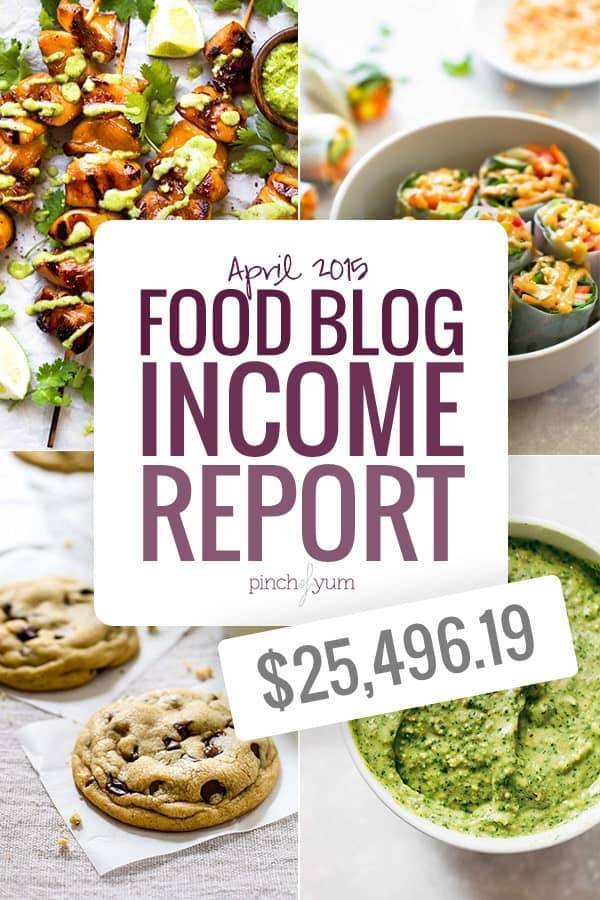
Hiya!
Bjork here checking in for our monthly traffic and income report. For those that are new ‘round these parts, I’ll clue you in so you know what’s going on here.
Three years ago we started an experiment called The Food Blog Money Making experiment. Any guesses as to what the experiment was about? 🙂
Right-o! We wanted to see if it was possible to create an income from a food blog. Here’s a quote from that First Income Report:
“We thought it would be fun and maybe even helpful if we gave everyone a sneak peek into the earnings coming from Pinch of Yum. The plan is to post total earnings once a month.”
We started out with total earnings of $21.97. Not much, but it was something. And we knew that if we could make $21 then we could probably make $42, and if we could make $42 then we could probably make $84. Etc, etc…
We continued to do these reports each month as a way to (1) keep ourselves accountable to the promise we made in that first post and (2) keep ourselves accountable to continuing to improve the blog.
These posts have been helpful to us because they push us to find ways to improve, continuing with that experiment that we started over three years ago. Our hope is that these reports are also helpful to you, whether it be for your blog, business, or non-profit.
Lindsay and I both believe that you (yes, you!) can do really incredible things if you stay focused and committed over a long period of time. It doesn’t happen overnight, and it doesn’t happen in a week, but little by little, day by day, and month by month you’ll start to notice things building, you’ll start to improve, and you’ll start to see your seed of an idea begin to grow into something really cool.
Let’s jump into the numbers.

A quick note: Some of the links below are affiliate links. All of the products listed below are products and services we’ve used before. If you have any questions about any of the income or expenses you can leave a comment and I’ll do my best to reply.
Income
- Bluehost – $6,785.00 –> this income comes from a page where we show people how to start a food blog in three easy steps.
- Yellow Hammer Media – $5,651.97
- sovrn – $5,597.02
- Tasty Food Photography – $3,842.50
- Food Innovation Group – $2,393.77
- Sponsored Posts/Speaking – $2,000.00
- Gourmet Ads – $1,369.78
- Swoop (via BlogHer) – $968.60
- Federated Media – $907.65
- Genesis Theme – $673.09
- Recipe/Image Licensing – $600.00
- Go Sugar Free Course – $523.25
- Amazon Associates – $288.44
- The Creamy Cauliflower Sauce eCookbook – $207.00
- Everyday Healthy eCookbook – $152.00
- Elegant Themes – $129.00
- How to Monetize Your Food Blog eBook – $47.50
- AWeber – $28.80
Total Income: $32,036.37
Expenses
- Support Staff – $1,199.48
- Food Expenses – $952.01
- eBook Affiliates – $849.85
- Transportation and Travel – $848.15
- Amazon S3 and Cloudfront – $541.72
- Media Temple (Hosting) – $350.00
- Survey Monkey – $300.87
- Email Design – $269.00
- PayPal Transaction Percentage – $272.30
- MailChimp – $230.00
- Photography Props and Misc. – $129.12
- W3 Edge – $99.00
- VSCO – $89.25
- LeadPages – $67.00
- Akistmet – $59.00
- Adobe Creative Cloud – $53.55
- 1Password – $49.99
- PayPal Website Payments Pro – $30.00
- Shoeboxed – $29.95
- ViralTag – $28.00
- QuickBooks – $26.95
- VaultPress – $20.00
- E-Junkie – $18.00
- TailWind – $14.99
- Backupify – $12.00
Total Expenses: $6,540.18
Net Profit: $25,496.19
If you’re interested in learning more about some of the ways that you can monetize a food blog, we encourage you to download this free ebook, “16 Ways to Monetize Your Food Blog,” from our sister site, Food Blogger Pro!
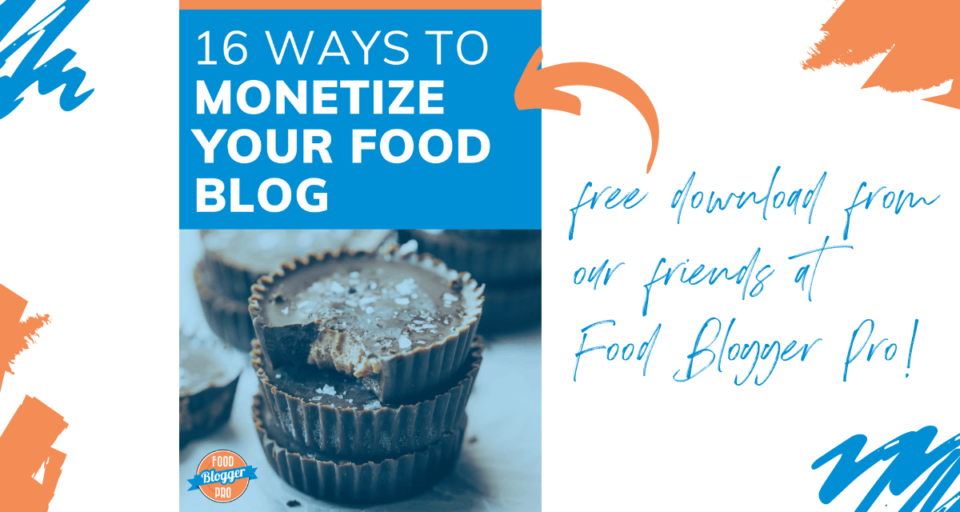
RPM
RPM is an advertising metric that shows you how much revenue your website earns for every 1,000 page views. It’s a helpful metric because it allows you to see how effective you are at monetizing your blog.
Below is the RPM that we had for Pinch of Yum in the month of March.

Traffic Totals
Below are some screenshots from Google Analytics. You can click on these images to view a larger size.
Traffic Overview
Top Ten Traffic Sources
Mobile Vs. Desktop Vs. Tablet

Ad Optimization with AdThrive

We’ve officially started the process of handing over our ad management to an ad optimizing company called AdThrive, and we couldn’t be more excited about it.
If you’ve been following along with these income reports you’ll remember that there was a time when we considered moving away from ads completely. After talking about it in depth many times over, we realized that we’d be giving ourselves a pretty significant revenue cut at a time when we hadn’t fully replaced the revenue from ads. While we have some ideas for how we can start to replace the income from ads (more on that in future reports), we realize that ads are still a steady income stream for Pinch of Yum for the time being.
So once that decision was made, I knew we needed to optimize our ad setup. I buckled down and added “ad optimization” to my to-do list.
And it sat there. And sat there. And sat there…
It was one of those to-do items that started to grow roots in my list. It almost looked like it belonged there permanently because I got so used to seeing it sitting idly on my list. Know what I mean? I run into those dreaded to-do tasks from time to time, and I’ve realized that the best way to get them off my to-do list is to bring in someone that can help with it.
In short, I realized that if I was going to check “ad optimization” off of my list then I needed to bring someone on to help with the process. We felt like the best fit for Pinch of Yum would be AdThrive.
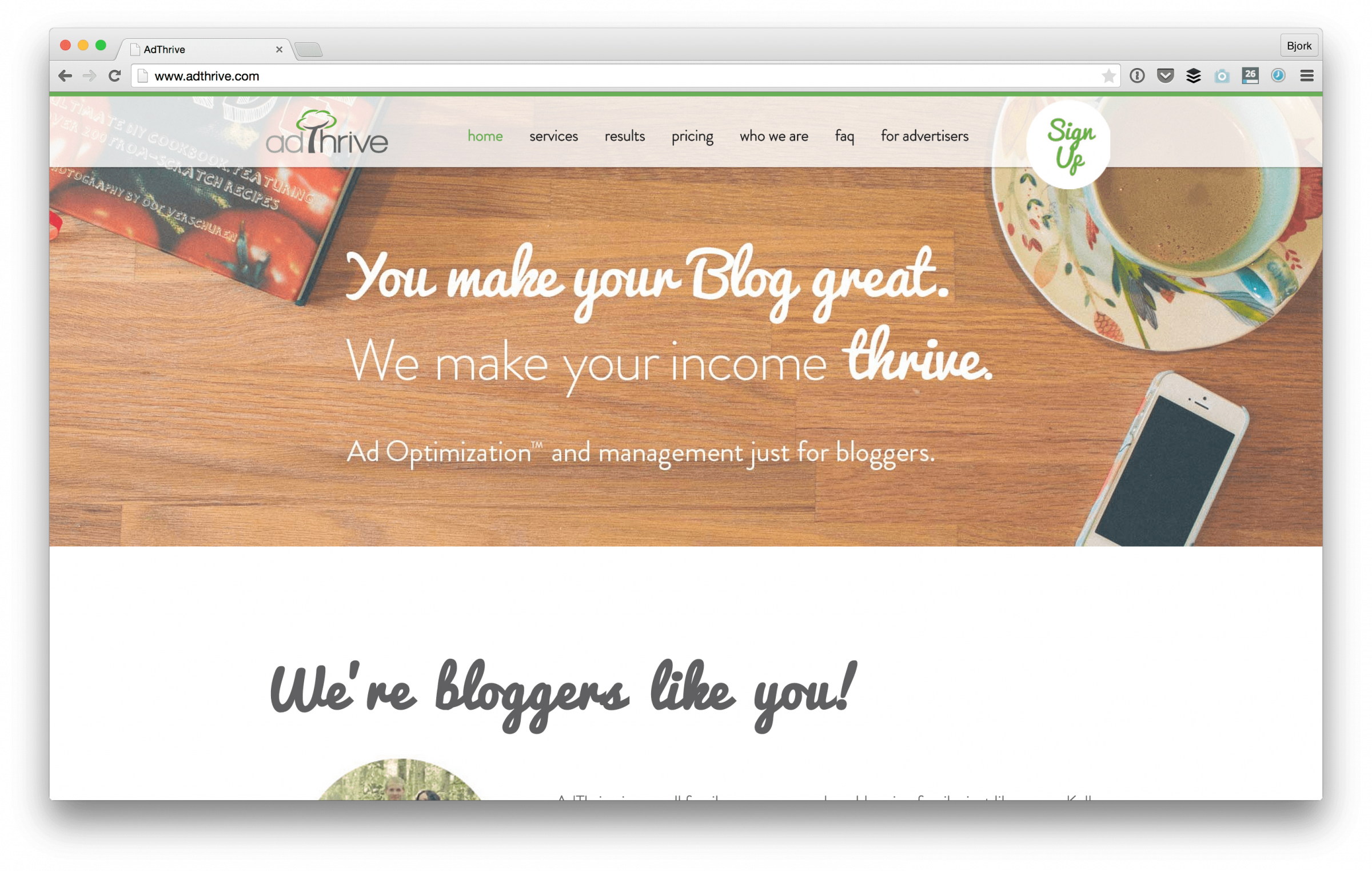
So what’s the takeaway?
It depends on where you’re at with your blog. There are three levels when it comes to ad optimization for your blog, and it’s important that your ad optimization strategy isn’t too far ahead (or behind) the level of your blog.
A quick note: These three levels are for blogs that have high traffic potential. If you’re in a small niche with lower traffic (but a dedicated readership), you’ll want to focus on creating a product you can sell instead of using ads. We have a course on Food Blogger Pro called Creating an E-book that would be a great place to start to learn about creating and selling a product. In general, creating and selling your own product has more earning potential than ads.
Level 1: Getting Started (0 – 100,000 Monthly Pageviews)
If you’re just getting started with your blog you shouldn’t be focusing on optimizing your ads, you should be focusing on getting your blog up and running, understanding WordPress, improving your writing or photography, and building your list of subscribers.
You should have a Basic Ad Waterfall Setup setup, but I wouldn’t recommend working with more than two or three ad networks. You should have a high paying ad network show first and then pass back to a network with a 100% fill rate.
Would it be possible to create more income from your blog by optimizing your ads at this level? For sure.
Would your time be better spent figuring out how to produce the best possible content? Undoubtedly yes.
Level 2: Starting To Rock It (100,000 – 500,000 Monthly Pageviews)
The 100,000 – 500,000 pageviews level is when you should start to pay more attention to ad optimization. Small changes could potentially have a long-term positive impact on the revenue that you’re earning from your blog.
You should start to track your ads more closely and make sure that the higher-performing ad networks are showing in your first tier. You’ll probably want to have three tiers in your ad stack, meaning that you have a high paying ad show first, then you have a mid-level paying ad show second, and then a 100% fill ad show last.
At this level, you could start to think about bringing an ad ops company or individual on to your team to help with your ad optimization. If you prefer the DIY method and you have the time on your hands (haha), then you should start to educate yourself on ad servers. The most popular is DoubleClick for Publishers, which is owned by Google.
An ad server like DFP gives you more control of how ads are displayed on your blog and also gives you the ability to create competition with the ads that are being displayed on your blog, which we’ll talk about in Level 3.
Level 3: Blogging Biz (500,000+ Monthly Pageviews)
500,000+ pageviews a month. Awesome. You’re at the point where your blog is starting to grow into a solid and reliable business. At this point, the changes you make with ad optimization have the potential to create significant increases in revenue.
You should have DFP or another ad server setup, and your ads should have some level of competition happening. Here’s what I mean by that:
You create your ad waterfall, and at every level, you tell DFP the CPM of that given ad network. Google AdSense will show ads only if it can pay you a higher CPM.
It creates competition between the ad networks and Google AdSense, which is really good for you. Here are a couple of situations that illustrate how this can positively impact the revenue you’re earning from your blog.
Situation One:
DFP: I have Totally Awesome Ad Network that pays $3 CPM. Can you beat a $3 CPM, AdSense?
AdSense: Yes, I can. I have an ad that pays $3.50 CPM.
DFP: Great, I’ll show that instead of the ad from Totally Awesome Ad Network.
AdSense: Sounds good, here’s the ad.
Situation Two:
DFP: I have Totally Awesome Ad Network that pays $3 CPM. Can you beat a $3 CPM, AdSense?
AdSense: I can’t right now, sorry.
DFP: That’s okay, I’ll show the ad from Totally Awesome Ad Network.
Situation Three:
DFP: I have Totally Awesome Ad Network that pays $3 CPM, but it’s not filling with any ads right now, so I’m going to pass back to the Super Cool Ad Network that pays $2 CPM. Can you beat a $2 CPM AdSense?
AdSense: Yes, I can. I have an ad that pays $2.25 CPM.
DFP: Great, I’ll show that instead of the ad from Totally Awesome Ad Network.
AdSense: Sounds good, here’s the ad.
What Level Is Pinch Of Yum?
Traffic wise, Pinch of Yum has been at Level 3 for quite some time, but we’ve always been at Level 2 when it comes to ad optimization. We’ll be spending the next few weeks working with AdThrive to transition Pinch of Yum to Level 3.
We plan to continue to keep a close eye on how things develop so, in turn, we can continue to communicate what’s working (and what’s not) here on these monthly reports.
If you’re interested in learning more about this ad optimization stuff, I’d suggest you check out an e-book I recommended in March 2014’s income report called How to Monetize Your Food Blog.
Speaking of…
How To Monetize Your Food Blog E-Book and Pinch Of Yum
Some of you might remember when Kiersten Frase from Oh My Veggies made a guest appearance on the March income report to share some tips for monetizing a food blog and promote her aptly named e-book, How to Monetize Your Food Blog.
I had read the e-book and liked that it was full of simple, powerful, and actionable advice. It’s a perfect e-book for what I described earlier as Level 1 and Level 2 bloggers.
A lot has changed (all good things!) for Kiersten lately, which resulted in her coming to us and asking if we’d be interested in taking things over the e-book. We said yes!
I’m going to pass it off to Kiersten who is going to share a bit more.

About a year ago, I popped in to talk a little about my e-book and how I monetized Oh My Veggies. And now I’m back! The past year has been a whirlwind for me personally (moving cross-country, renovating a house, having a baby—yikes!) and professionally. Where do I start?
Last fall, I made the decision to sell Oh My Veggies. It was something I had been gearing up for a while and when I found out I was pregnant, the timing seemed right. After a lot of discussions with potential buyers and seemingly endless contract negotiations, the sale closed at the end of February. I wrote about all of this in a little more detail, but the short version is that I’m still working on Oh My Veggies part-time as an editor, but marketing, managing ads, and the business side of things are all off my plate now.
Which is why I’m here today! Since I’m no longer involved in the monetization of Oh My Veggies, I started to realize that I wasn’t really comfortable selling the How to Monetize Your Food Blog e-book anymore. I get questions about the book and blog monetization constantly and because digital advertising changes so quickly, it’s hard for me to give accurate answers. Just as the time was right for me to sell Oh My Veggies, I realized that it was time for me to move on from the whole food blog monetization advice-giver thing I had going too; I don’t have all the answers and even if I did, I’m focusing on my family and career right now and dividing my attention by adding a third thing to the mix just wasn’t working out.
When I made this decision, I didn’t want to just yank the e-book from my site and call it a day, so I asked Bjork and Lindsay if they’d be interested in taking it over for me. I knew that if anyone could maintain it, add more value to it, and get it out there to the food blogging world, it was them. (In fact, much of the e-book’s success is due to Pinch of Yum’s support.) And luckily, they agreed! I can’t imagine anyone more perfect to manage this e-book and I’m excited to see where they take it—because let’s be real, they know their stuff when it comes to the business side of food blogging.
Pinterest: The Results Are In!

Back in January, I introduced a new project related to Pinterest image style and engagement. I kept seeing these long pins on Pinterest, but I wanted to know FOR SURE – is making these extra images worth my time? Are these long collage-style pins actually any more effective than traditional “short” images?
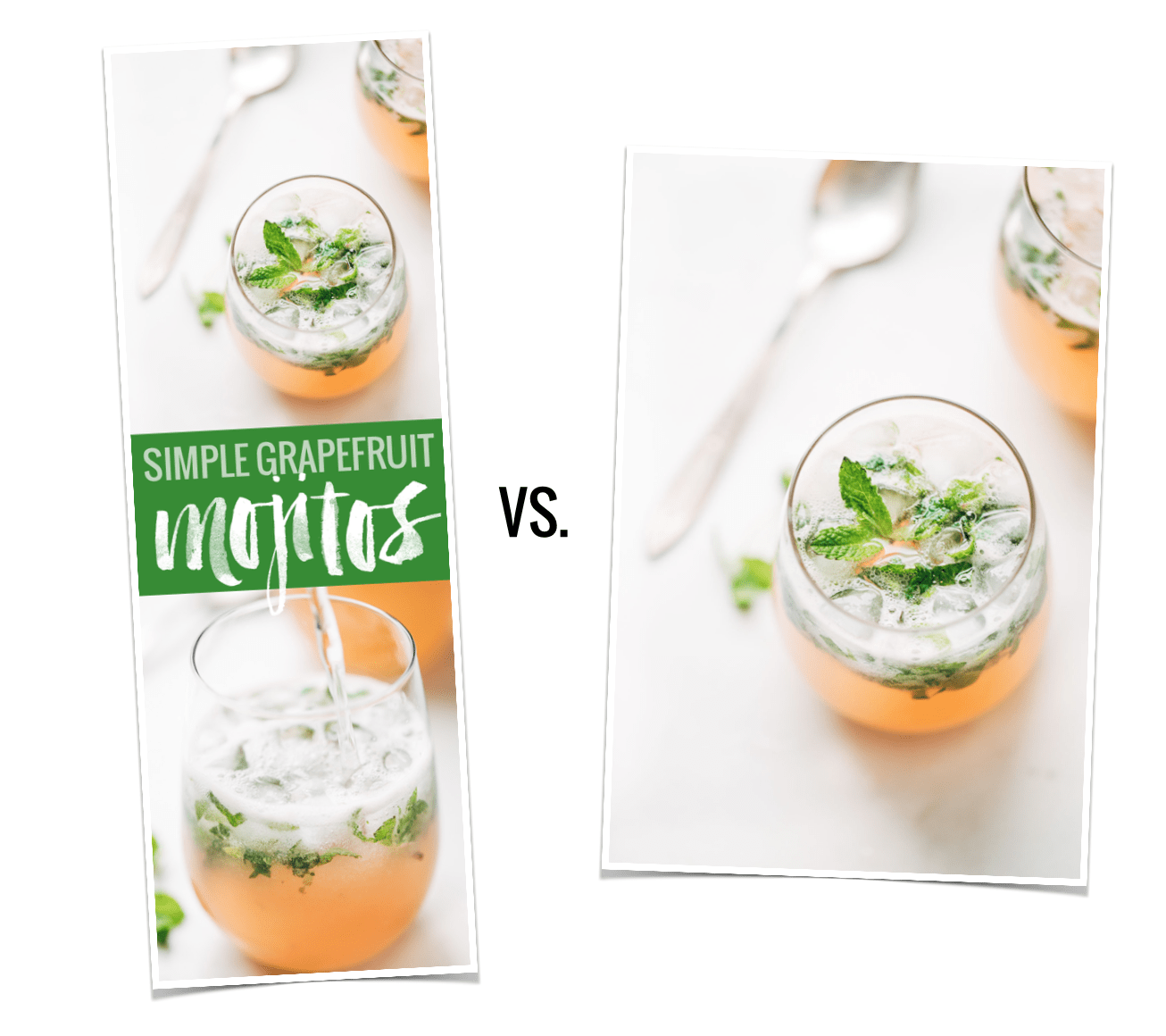
We created an experiment that would help us answer these questions. Here’s a breakdown of what we did.
- January 2015: We identified the top 100 recipes from Pinch of Yum and created a long collage-style pin for each of those posts.
- January, February, March 2015: We scheduled a long pin AND a short pin for each of those top 100 recipes. We pinned each style once on various boards on the Pinch of Yum Pinterest account to see which would perform better.
- March, April 2015: We analyzed the performance of each of those pins using TailWind (a Pinterest scheduling tool with great analytics) and compared the long pin performance with the short pin performance, with the hope of finding out which style was repinned more frequently.
- April 2015: We analyzed the performance of a random group of long and short pins from various popular food accounts on Pinterest. We did this to get data from outside of the Pinch of Yum following AND to get more significant numbers since most of those food accounts have a much larger following than we do.
The first time I reported back (in the February income report) with preliminary findings from a small sample group in February, we had found that the long pins got more repins 87% of the time, and on average, the long pins got 37% more repins than the short pins.
So now it’s May.
Have the same results held true as we’ve looked at more pins across more Pinterest food accounts?
Short answer: yes. Very big yes.
- Pinterest Account: Pinch of Yum
- Total Followers: 40,000
- Pinterest Boards: all
- Pin Sample Size: 200
- Average: Long pins received 25% more repins than short images.
- Pinterest Account: SkinnyTaste
- Total Followers: 700,000
- Pinterest Board: Best Easy Recipes
- Pin Sample Size: 100
- Average: Long pins received 64% more repins than short images.
- Pinterest Account: Jane Wang
- Total Followers: 8,000,000
- Pinterest Board: Delicious
- Pin Sample Size: 100
- Average: Long pins received 118% more repins than short images.
- Pinterest Account: Damn Delicious
- Total Followers: 200,000
- Pinterest Board: Easy Recipes
- Pin Sample Size: 100
- Average: Long pins received 71% more repins than short images.
So let’s average all those out. Looking at 500 long and short pins on four different Pinterest accounts…
Long Pins Received 70% More Repins Than Short Pins.
My mouth is literally hitting the floor as I write that.
I’m really, really glad we took time to analyze the other higher traffic Pinterest boards because this is super valuable information that completely changed our data (mine was 25% more repins for long images – theirs averaged us out to 70%). However, there are a few things to consider with this process and how we set up our experiment.
- When we analyzed the pins from the higher traffic boards, we DID NOT isolate pin style as the only variable. Different recipes were being compared to each other (for example, we’d record the long pin data for Crockpot Carnitas and short pin data for Grilled Cheese) – not to mention we were comparing content from different contributors on group boards. It was a very random sampling where repin numbers could have been impacted by many different factors.
- When we analyzed the pins on Pinch of Yum, we DID isolate pin style as the only variable. And that’s where we saw far less significant results from the long pin style. For example, we compared a long pin of Crockpot Carnitas to a short pin of Crockpot Carnitas.
- When we analyzed the pins on Pinch of Yum, we did pin all of these pins to different boards, so that is potentially something that could have been a factor in our results (but unlikely since most boards have the same number of followers).
Okay, so bottom line.
I’m a bottom-line kind of girl and this post is getting long and boring. Just give me the relevant info, right? Here are some final takeaways.
(Keep in mind that these 7 statements are based on me synthesizing the results of this formal experiment, feedback from informal reader surveys, and my own personal experience!)
- Long pins are more effective at getting repinned on Pinterest.
- Long pins can be a great way to create a branded look and feel.
- Long pins are more likely to stand out and grab a user’s attention in the feed and in search results.
- On the other hand, long pins are often reported by readers to be annoying and difficult to consume on mobile.
- Also, Pinterest is always changing and we don’t always know what’s coming. Long pins may not be useful anymore if and when Pinterest makes its next algorithm or display change.
- Long pins take extra work to create and they don’t always look good when put in posts.
- Long pins are not magic Pinterest fairies. There were plenty of occasions that we would find short pins getting thousands of repins and long pins getting virtually none because VALUABLE CONTENT WINS.
You guys, what a ride. If anything throughout these last few months, I’ve learned these things: that Abby (our intern) is incredible, that Pinterest is a beast that is really hard to study, and that people on Pinterest are looking for good, helpful stuff.
So let’s go create good, helpful stuff! And have a major snack while we’re at it.
And that brings us to the End of The Pinterest Novel. Tadahhh!
Food Blogger Pro Update

It’s been a while since we’ve updated everyone on Food Blogger Pro. It’s not technically part of Pinch of Yum (hence our reason for not including it in these reports), but it’s a really important part of what we do and Lindsay and I both spend quite a bit of time working on it.
Here are a few quick updates and some highlights of things we’re working on:
- Food Blogger Pro is currently sitting at 957 members. 678 monthly and 279 yearly members.
- We’ve integrated with Intercom, which will allow us to start to offer more personalized messaging to members (and non-members).
- We’re starting to hire on some awesome team members. You can follow along and learn more about the folks we’re hiring on the FBP blog to learn more about that.
- We have a great line up of courses queued up for May and June. The most recently released course is called Composition for Food Photography on Food Blogger Pro.
Quick Reminder: If you’re interested in signing up for Food Blogger Pro make sure you do so before May 22nd so you can get your free download of How to Monetize Your Food and the DIY Media Kit.

Three a Day

One practice I’ve been doing every morning for a while now is recording these three things: three things I’m grateful for, three people I want to pray for, and three things I’m letting go of. So I guess it could be Nine a Day, if you’re good at math, but whatever, Smartie.
This practice is so valuable for me because it forces me to slow down and really take an active role in seeking and creating some of the things that I keep saying I want more of in my life: gratitude, love, and peace.
Like, HIPPIE TIME.
Okay but seriously.
Even though it’s so simple and obvious, it’s been the best way for me to take hold of my constantly wandering mind and sort of force it, er, more like nudge it, into the right places each morning. Because starting your day with your mind in the right place is everything, right? And to be honest, I’m usually thinking about social media, posts, emails, and everything else meh if I don’t guide my mind to these better places.
Never underestimate the power of writing things down! Three a day. Try it.
Also, PS. I have this cute notebook (gold and white polka dots! thank you, Home Goods), which helps the cause x100.
Life Plan Before Business Plan
I just finished reading the book Street Smarts.
One of my favorite concepts from the book was “life plan before business plan”. The idea is that you should put together a life plan and then structure your business plan around that. Oftentimes we have really clear ideas of what we want from a business, but we don’t really think about what that means for our life.
It forced me to ask myself: “Why did you set that business goal, and why does it really matter?”
Sometimes I had a clear answer, but other times I realized I had set a goal for the sake of setting a goal, and I realized that my ambition to reach a certain goal was distracting me from things that really matter. Life things.
Don’t get me wrong – you have to work really hard to build a successful business (whether it be a blog, non-profit, or brick and mortar store). This is especially true when you’re first getting started. But it’s easy to lose yourself in the process. Soon the only thing you’re thinking about is the business plan, not your life plan.
The bottom line: Be aware of the goals you’re setting with your blog or business, and make sure that they align with your life plans. Life plan before business plan.
Because Of You

It’s because of you that this thing we call Pinch of Yum can exist as it does today. Thank you so much for making these recipes, leaving comments with your love and feedback, and sharing this food around the table with your families and friends.
Every month we use a portion of the income from the blog to support a special project at The Children’s Shelter of Cebu. This month we’re supporting CSC by donating to CSC’s summer activities fund. Summer break in the Philippines goes from mid-April to early June, when the hot season kicks in. Each summer the older children get the opportunity to select an activity, like badminton, swimming, or guitar, for their time off school.

Thanks so much for following along with Pinch of Yum. We really appreciate you.


